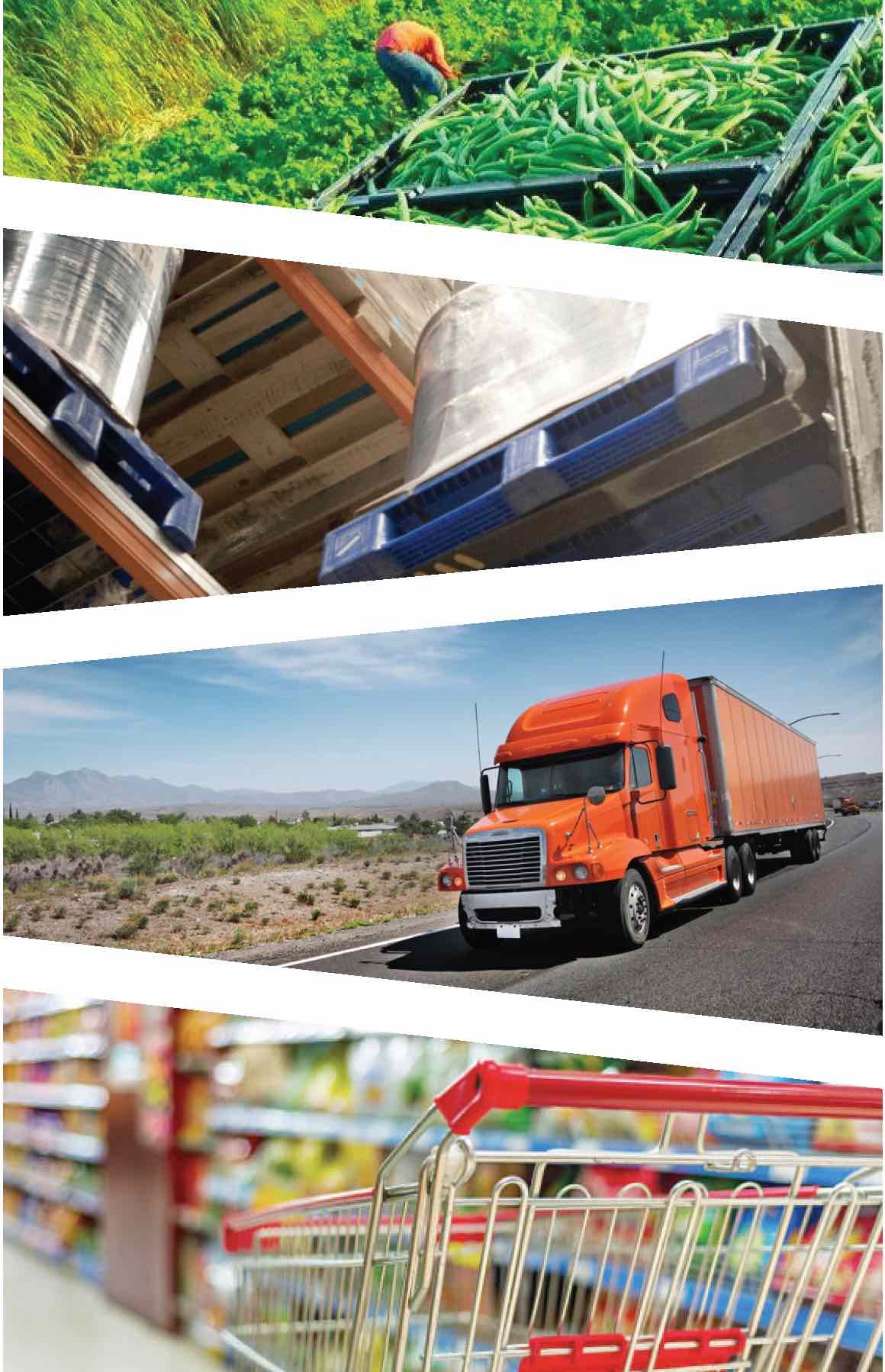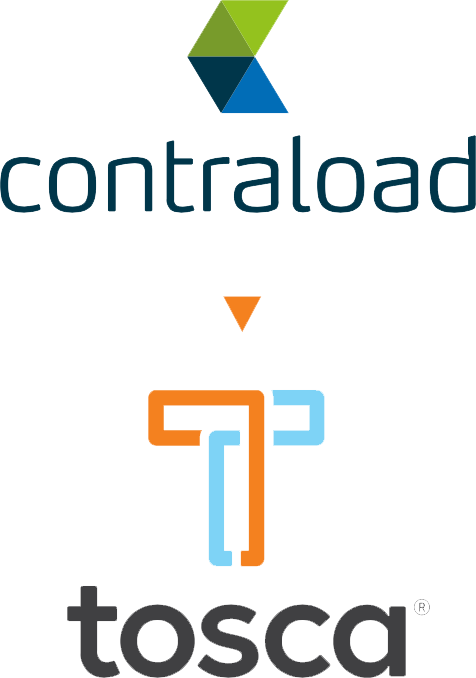Evaluating the Impact of Reusable Secondary Packaging on Sustainability and Costs
Efficient packaging solutions can have a profound effect on a company’s profitability and sustainability initiatives. It’s not just about optimizing your supply chain for today; it’s about future-proofing it– to deliver long-term benefits for both your business and the environment.
Primary packaging is something we’re used to interacting with day to day, and it’s usually the most common place to start when businesses want to lower their footprint. Secondary packaging, where you ensure your primary packaging stays intact and keeps its integrity, provides an opportunity to explore more sustainable options. It’s not just about the product that reaches the final consumer, but it’s about the journey it takes to get there.
So, how can you make your supply chain more sustainable? That’s where your choice of secondary packaging comes into play. Reusable secondary packaging can not only enhance the performance of your supply chain – but it can do better for the environment at the same time.
This blog will explore the key differences between primary and secondary packaging, the importance of reusable secondary packaging, and how opting for reusable secondary packaging can reduce costs while promoting a more sustainable supply chain.
Primary vs Secondary Packaging: What is the Difference?
Primary packaging refers to the material that directly encases the product. It serves as the first layer of protection, keeping the product safe, hygienic, and appealing until it reaches the consumer. Examples include the bottle containing a beverage or the box holding a cereal. Primary packaging is often designed to be user-friendly and informative, featuring labels and branding to attract consumers and provide essential product information.
Secondary packaging is the next layer, used to group various primary packaged products together. Its purpose is to provide additional protection during transportation and to make handling, storage, and distribution more efficient. Examples include the corrugated boxes that contain multiple bottles of beverages or the crates used to transport cans of food. Secondary packaging plays a key role in reducing product damage, optimizing space, and ensuring products are secure during transit.
Both primary and secondary packaging play crucial roles in the customer journey. While primary packaging ensures the product’s integrity, hygiene, and appeal until purchase, secondary packaging ensures safe, cost-effective transport from the manufacturer/supplier to the retailer, protecting the primary packaging and the product it holds. This collaboration between the two layers is essential for maintaining product quality and safety throughout the supply chain.
Integrating sustainability into packaging practices is becoming increasingly important, especially in keeping in compliance with sustainability regulations. Primary packaging often focuses on reducing the amount of material used, using recyclable or biodegradable materials, and minimizing waste – and this is usually the first place where sustainability comes to mind. However, secondary packaging is often overlooked as a sustainability play. Switching from corrugated and foam to reusable plastic containers offers significant sustainability opportunities.
Let’s take a closer look at what reusable secondary packaging is and how it can create a positive impact on the environment.
What is Reusable Secondary Packaging?
Reusable secondary packaging involves using durable materials designed for multiple uses throughout the supply chain, rather than being discarded after a single use. Examples of reusable secondary packaging include plastic crates, pallets, and bulk bins.
This not only conserves resources and reduces landfill waste but also lowers the overall carbon footprint of the supply chain, promoting a more circular economy. By optimizing both primary and secondary packaging for sustainability, businesses can significantly reduce their environmental impact while simultaneously lowering costs through more efficient use of materials, ensuring cost-effective product protection and efficient transportation.
Tosca provides a wide range of these options, which are robust, sustainable, hygienic and can be tailored to different industries’ needs – from plastic reusable crates to pallets and bulk bins.
Why Choose Reusable Secondary Packaging?
There are numerous compelling reasons why businesses are increasingly opting for reusable options for their secondary packaging, and why Tosca is becoming their preferred choice. Let’s take a look at a few of them:
Strength and Durability: Plastic offers significantly greater strength and durability compared to corrugated alternatives. The robustness and structural integrity of Tosca RPCs provide superior protection for perishables and non-perishables over corrugated options. Our durable plastic containers are 4x stronger than traditional counterparts, and their stackable design ensures enhanced stability and reliability during transport.
Extended Shelf Life: Reusable packaging is designed to extend product shelf life. The ventilation features in Tosca RPCs help maintain the freshness of perishable goods, ensuring they reach the customer in optimal condition and up to 50% less shrink. While reducing food waste, they improve product quality, directly impacting customer satisfaction.
Cost Savings: By minimizing product shrinkage and damage, reusable secondary packaging reduces waste-related costs. The enhanced protection translates to fewer losses, and the standard sized design leads to efficient packing and transport. This efficiency saves on transportation costs due to 25% more cube utilization and lower fuel consumption due to fewer trips needed from A to B.
Labor Savings: Tosca’s retail-ready crates are engineered with labor cost savings as a top priority. Their high-capacity, reusable plastic packaging enhances restocking efficiency, doubling labor productivity by reducing the time and effort required by your staff.
With a durable design that transitions seamlessly from storeroom to sales floor, these crates eliminate the need for additional handling and product transfers, significantly cutting down on labor costs. By streamlining the entire process, our plastic crates ensure products are display-ready with minimal effort.
Traceability and Automation: Tosca’s reusable packaging solutions are designed to be automation-ready – with a standard footprint – and can be integrated into various supply chain systems. They can also be tagged and traced, ensuring accountability and providing valuable data on the status of goods, such as temperature, location, orientation and vibration levels, which can be used to optimize supply chain efficiency.
Pooling: Our pooling service provides substantial cost savings with zero capital outlay required. Our extensive range of reusable products is tailored to meet the specific needs of your industry. We take care of inventory management, ensuring you have the items you need, exactly when you need them, while also handling maintenance — all at a fraction of the cost.
Adaptability Across Industries: Tosca’s reusable secondary packaging is versatile and can be adapted for use in various industries, including meat, eggs, poultry, fresh produce, seafood, and retail. Our extensive offerings makes it a practical choice for every node in the supply chain – be it for inter-plant processing, or moving products to the retail stores.
Highest Food Safety Standards: At Tosca, our retail-ready RPCs are designed with top-notch hygiene and food safety standards. Our cleaning process is highly rigorous, involving multiple inspections, controlled water temperatures, and frequent testing to ensure sanitation. Tosca is ISO 22000 and ISO TS 22002-4 certified, reflecting our commitment to maintaining a food-safe supply chain from start to finish.
Sustainability and Reusability: Reusable secondary packaging aligns with sustainable practices by reducing the reliance on single-use materials. Tosca’s reusable plastic containers and pallets are designed with sustainability at the forefront.
Unlike traditional single-use packaging, they are not destined for landfills. Even with repairs, wood pallets only last between 1 trip and 3 years, preventing you from reaching sustainability goals. Plastic pallets can be used 100s of times and are 100% recyclable.
Instead, Tosca’s pooling service ensures that after each trip through the supply chain, these containers and pallets are sent to our service centers, where they can be reused again. This efficient pooling process prevents millions of tons of packaging materials from ending up as waste in landfills, significantly reducing environmental impact.
Protect Your Products and the Planet
Incorporating reusable secondary packaging into your business strategy offers two obvious benefits: it helps protect your products from damage, ensuring they reach customers in pristine condition, and it supports environmental sustainability by reducing waste and your carbon footprint. This approach not only improves the bottom line through cost savings, but also demonstrates a commitment to sustainable practices.
Furthermore, reusable secondary packaging is emerging as the clear choice for businesses aiming to future-proof their supply chains through the integration of advanced technology, product innovation, and optimized supply chain processes.
Take the next step in optimizing your supply chain. Use Tosca’s savings calculator to see how much you could save with reusable secondary packaging, and explore our sustainability calculator to understand the environmental benefits. By making the switch, you can contribute to a better planet while enhancing your business efficiency.


